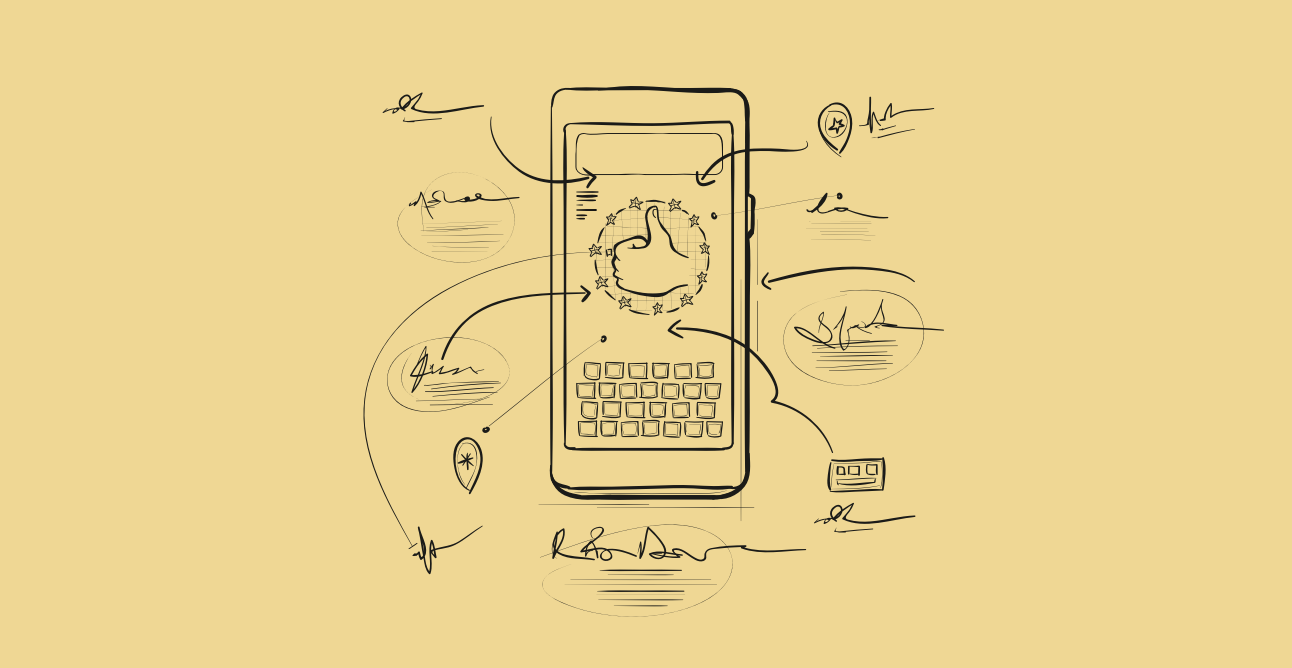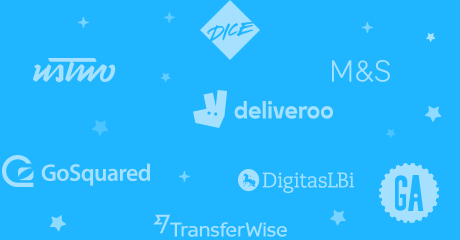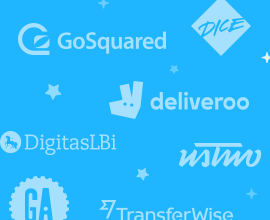The list below contains the most common UX design methods and techniques used by UX Designers as they create great experiences for users. For each item on the list, you’ll see additional links with some of the best practices available.
There are quite a few methods so here's a list of what we'll cover in this post - feel free to jump to bits you're interested in:
1. Value Proposition
2. Product Strategy
3. Competitive Audit
4. Cultural Probes
5. Stakeholders Interviews
6. User Interviews
7. Kickoff Meeting
8. Heuristic Evaluation
9. Brainstorming
10. Task Analysis
11. Product Roadmap
12. Focus Groups
13. Card Sorting
14. Usability Testing
15. Concept Testing
16. A/B Testing
17. Guerrilla Testing
18. Field Studies
19. Eye Movement Tracking
20. SWOT Analysis
21. Accessibility Audit
Let’s start!
1. Value Proposition
A statement that maps out the key aspects of product: what it is, who it is for and how it will be used. Value proposition helps the team create consensus around what the product will be.

A thought value proposition help UX designers to keep the focus in the important things Image credit: UXMag
Strategyzer’s Value Proposition Canvas Explained:
Related links:
2. Product Strategy
A product strategy is the foundation of a product life-cycle and the execution plan for further development. It allows UX designers to zero in on specific target audiences and draw focus on the product and consumer attributes.
Awesome talk by Jared Spool about building a winning UX strategy using Kano Model:
Related links:
3. Competitive Audit
Competitive Audit is a comprehensive analysis of competitor products that maps out their existing features in a comparable way. The goal of competitive audit is to discover what is working for other companies in your industry, so that you can make those strategies work for you, too, to gain a competitive advantage.
Related links:
4. Cultural Probes
Cultural probes is a UX design technique used to inspire ideas in a design process. It serves as a means of gathering inspirational data about people’s lives, values and thoughts. With minimal intrusion, researchers can glean insights into participants’ environments that can help to identify problem statements, uncover new opportunities, and inspire the designer with new ideas and novel solutions.

Cultural probes use a collection of tools, artifacts and tasks intended to provoke the user to look and think about their environment in new ways.
Related links:
5. Stakeholders Interviews
Stakeholder Interviews are conversations UX designers conducts with their key stakeholder: customers, bosses, subordinates or peers both within and outside the organization. The interviews allow UX designer to step into the shoes of their interviewees and see your role through the eyes of these stakeholders. It also helps prioritise features and define key performance indicators (KPIs).
Related links:
6. User Interview
A user interview is a common user research technique used typically to get qualitative information from existing users. User interview helps UX designer better understand their users (user’s emotion and opinions). This technique is especially useful when the target audience is new or unknown for the team.

Usually, a researcher meets with participants one-on-one to discuss in depth what the participant thinks about the topic in question.
Related links:
7. Kickoff Meeting
The kickoff meeting covers a high-level outline of the product’s purpose, who is involved in designing and developing the product, how they’ll work together and stay up to date on progress, and what the intended results or success metrics are. The kickoff meeting sets the stage for the success of your product.

A kickoff meeting is the first meeting with the project team and the client of the project. Image credit: 1stwebdesigner
Related links:
8. Heuristic Evaluation
Heuristic Evaluation is a detailed analysis of a product that highlights good and bad design practices in existing product. It helps UX designers visualize the current state of the product in terms of usability, accessibility, and effectiveness of the experience.

A radar plot showing a website that performs well across all heuristic categories. Image credit: Smashing Magazine
Related links:
9. Brainstorming
Brainstorming is widely used by teams as a method to generate ideas and solve problems. Brainstorming allows the team to visualize a broad range of design solutions before deciding which one to stick with.

Brainstorming is a process for generating creative ideas and solutions through intensive and freewheeling group discussion.
Related links:
Brainstorming is the most frequently practiced form of ideation. We recommend that you use it along with Brainwriting…www.interaction-design.org
10. Task Analysis
A study of the actions required in order to complete a given task. Task Analysis is helpful when designers and developers try to understand the current system and its information flows. It makes it possible to allocate tasks appropriately within the new system.

Task analysis is a simple and effective process for laying out tasks from a user’s perspective. Image credit: Comcast
Related links:
11. Product Roadmap
Product roadmap is a product’s evolution plan with prioritized features. It could be a spreadsheet, a diagram or even a bunch of sticky notes. UX designer shares the product strategy with the team and the road that needs to be taken to achieve its vision.
Related links:
12. Focus Groups
A focus group is a moderated discussion that typically involves 5 to 10 participants. You bring people to discuss issues and concerns about the features of a user interface. The group typically lasts about 2 hours and is run by a moderator who maintains the group’s focus.

Groups of 5–10 participants are lead through a discussion about a set of topics, giving verbal and written feedback through discussion and exercises. Image credit: telecomitalia
Related links:
13. Card Sorting
Card sorting is a UX design method used to help design or evaluate the information architecture of a product. UX designer asks users to group content and functionalities into open or closed categories. A result gives UX designer input on content hierarchy, organization and flow.

Card sorting is a well-established research technique for discovering how people understand and categorize information.
Related links:
14. Usability Testing
[Usability testing](https://ballparkhq.com/?utm_campaign=Ballpark%20SEO&utm_source=marvelblog "Usability testing") is the observation of users trying to carry out tasks with a product. Testing can be focused on a single process or be much more wide ranging.
Related links:
15. Concept Testing
A UX researcher shares an approximation of a product that captures the key essence (the Value Proposition) of a new concept in order to determine if it meets the needs of the target audience. Concept testing can be done one-on-one or with larger numbers of participants, and either in person or online.
Related links:
16. A/B Test
A/B testing is offering alternative versions of a product to different users and comparing the results in order to find out which one performs better. This is a great User research technique for optimizing funnels and landing pages.
Related links:
17. Guerrilla Testing
Guerrilla testing is one of the simplest (and cheapest) form of user testing. Using guerrilla testing usually means going into a coffee shop or another public place to ask people there about your product or prototype. It can be conducted anywhere ex- cafe, library, train station etc, essentially anywhere where you can find a relevant audience.
Related links:
18. Field Studies
Field study is about going out and observing users “in the wild” so that behavior can be measured in the context where a product will actually be used. This technique can include ethnographic research, interviews and observations, plus contextual enquiry.
Related links:
19. Eye Movement Tracking
A technology that analyzes the user’s eye movements across the UI layout (i.e. web page). Eyetracking provides data about what keeps users interested on the screen and how their reading flow could be optimized by design.
Related links:
20. SWOT Analysis
Various UX design methods for assessing the strengths, weaknesses, opportunities and threats that impact the user experience of a product.
Related links:
21. Accessibility Audit
A study to measure if the website can be used by everyone, including users with special needs. It should follow the W3C guidelines to make sure that all users are satisfied.

The end goal, in both usability and accessibility, is to discover how easily people can use a product and feed that information back into improving future designs and implementations. Image credit: Sarah Horton
Related links:
This article was originally published on Nick's Medium page.











